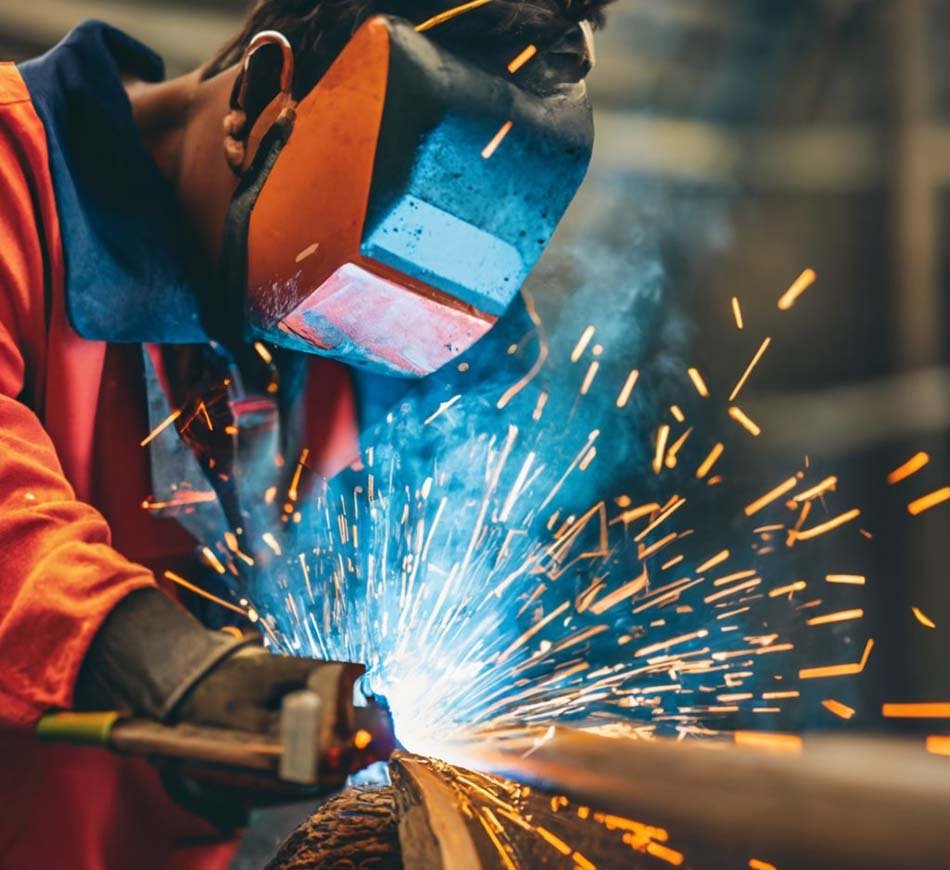
Welding Processing
Welding Processing is a crucial process in steel fabrication, playing a key role in joining metal components to create structures and products. Here is an overview of the typical welding process in a steel fabrication facility
- Material Processing: Raw materials, usually steel sections or plates, are received and inspected for quality then the materials are cut into the required shapes and sizes using processes like flame cutting, plasma cutting, or mechanical shearing.
- Fit-up and Assembly: The cut pieces are then assembled according to the engineering drawings and specifications. Fit-up is critical to ensure accurate dimensions and proper alignment of the components.
- Welding Types: Common welding methods in steel fabrication include:
- Shielded Metal Arc Welding (SMAW): Also known as stick welding, it uses a consumable electrode coated in flux to create the weld.
- Gas Metal Arc Welding (GMAW): Also known as MIG (Metal Inert Gas) welding, it uses a wire electrode and a shielding gas.
- Flux-Cored Arc Welding (FCAW): Similar to GMAW but uses a tubular wire filled with flux, eliminating the need for an external shielding gas.
- Gas Tungsten Arc Welding (GTAW): Also known as TIG (Tungsten Inert Gas) welding, it uses a non-consumable tungsten electrode and a shielding gas.
- Welding Equipment Setup: Welding machines are set up according to the welding process and material thickness. Proper selection of welding parameters, such as voltage, current, and travel speed, is crucial for achieving high-quality welds.
- Welding Process: Welders follow welding procedures specified in engineering documents.
Welding joints are prepared and cleaned to ensure good penetration and fusion.
Welders join the components using the selected welding method, paying attention to the specified welding symbols and joint configurations.
- Quality Control: Inspections are conducted during and after welding to ensure quality.
Non-destructive testing methods, such as X-rays or ultrasonic testing, may be employed to identify any defects in the welds.
- Post-Welding Operations: After welding, the welded assemblies may undergo post-weld treatments, such as stress relieving, to reduce residual stresses and improve the overall stability of the structure.
- Finishing: After welding and any necessary treatments, the finished product may undergo surface finishing processes, such as grinding or painting, to meet aesthetic and functional requirements.
- Quality Assurance: The final product is thoroughly inspected to ensure it meets the required quality standards and specifications.
- Documentation: Detailed records of welding procedures, inspections, and any necessary certifications are maintained for quality assurance and future reference.
Efficient and precise welding practices are essential for the overall success of steel fabrication projects, ensuring the integrity and safety of the final structures or products.
